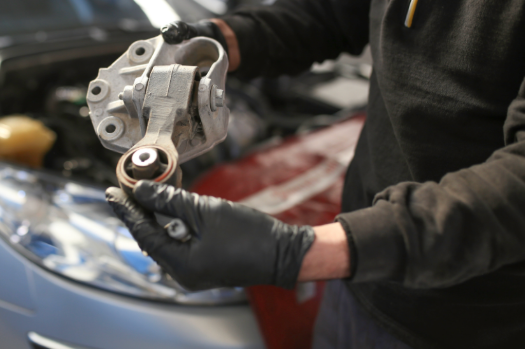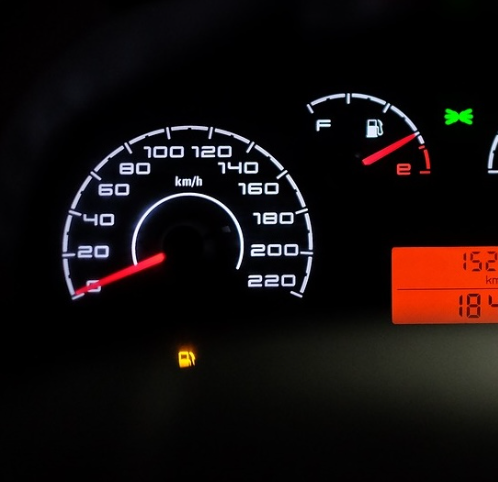How to Know Your Belts and Hoses Need Replacing
When you raise the hood of your car and look underneath it, the belts and hoses you see are probably the least glamorous items. They’re not electronic, they’re not moving parts, and they’re usually black and greasy. As a result, they’re the last thing you want to handle and not what you’d think are essential to the health and performance of the engine.
Well, think again. If the belts and hoses are not working correctly, neither is your car – because these parts keep your engine percolating. An essential ingredient in keeping your vehicle in good working condition is knowing how to spot these signs, or you can take your car to KS Auto Care in Elgin . Not only do we provide maintenance on your vehicle, but we also fix everything else, so no worries. As long as you’ve got us, we’ve got you.
That said, it helps to have some basic knowledge in case something’s amiss, so let’s help you sort some of this out.
Your engine can overheat for different reasons:
- the hose leaks coolant
- the belt turning the water pump breaks or gets loose
Loss of other belts can destroy your power steering, electrical charging system, or engine timing. These are not things you want to have happen while you’re heading to work or school, especially if you’re on vacation!
So how can you tell if these unglamorous parts are getting ready to blow? It’s helpful to look at belts and hoses separately.
Your Engine’s Belts
Your car has several belts, depending on the type and age of the engine. You may have a timing belt, a serpentine belt, and V-belts, including the fan belt. But what does that mean?
- Timing belt. It’s a rubber belt with hard teeth that keeps the internal parts of your engine working together. It’s like a bike chain. Cars can have timing belts or timing chains; if your vehicle has a belt, you’ll need to have it changed depending on time or mileage – or if you begin to notice symptoms like vibrations, decreased engine power, leaking oil, or the dreaded “check engine” light.
- V-belts. Some cars, including many older ones, have V-shaped belts that connect and move different parts of the engine. One is often the fan belt, which drives the water pump that draws coolant through the engine block. Without that belt, the engine will overheat. Even if the belt seems to be in good condition, some people recommend changing it every 30-40,000 miles, and some people even carry spare fan belts because they’re so critical to engine health.
- Serpentine belt. On many modern cars, manufacturers have replaced multiple V-belts with a single long belt that snakes through the engine, powering multiple accessories: the alternator, the power steering pump, the water pump, the air conditioning compressor, even the air pump.
Now that you know what your car’s belts do and how important they are, how can you tell if your car’s belts are close to breaking? First, you can check them for wear. Can you see cracks, fraying, or splits on the top? How about glazed or slick spots on the sides or underneath?
If the underside of the belt is slick, it can slip on the metal parts it goes around rather than moving them. The serpentine belt may even be missing chunks. Other things can also tell you that all is not well with your belts. A slick belt that’s slipping can make a squealing noise, and it won’t be cooling your engine. Check your engine temperature!
The miles you put on your car’s belts are important, too.
Consider the following from Consumer Reports :
“The Car Care Council says chances of a V-belt failure rise dramatically after four years or 36,000 miles, while the critical point for a serpentine belt is 50,000 miles. Any belt should be changed when it shows signs of excessive wear. But many new composite belts don’t show signs of wear until the failure occurs.”
Your Engine’s Hoses
- Hoses go everywhere in your car, not just in your engine compartment.
- They move water and coolant (antifreeze) from the radiator through the engine to cool it.
- They move special fluid through the power steering system.
- And they move brake fluid through the – you guessed it – brake system from the master cylinder to each wheel.
Not all hoses are the same. Some are rubber-based with additives but have their differences. They all have one thing in common: they all wear out.
Hoses operate in a hostile environment of changes from extreme heat to extreme cold and the impacts of high pressure, acid, and other chemicals. You may see swelling due to wear or exposure to chemicals, heat or pressure.
Checking The Hoses
Now let’s think about how to check your hoses so that you replace them before they spray hot water or chemicals around the engine compartment.
- Good hoses are firm. If you’re not sure how they should feel, go to an auto parts store and check. (Yes, we know that sounds weird, but try it.) Squeeze them, especially near the clamps, looking for soft spots, bulges, or places where there are cuts or frays.
- Look for stains from chemicals or oil.
- Check the hose coming from the radiator. If this hose leaks, you’re losing coolant, which will cause your engine to overheat. That’s important, but remember to be very careful around the radiator. It’s hot, the fluid inside is hot, and don’t get near it if the engine is running!
Come to KS Autocare to Replace Your Vehicle’s Belts and Hoses
Your hoses and belts are exposed to heat, chemicals, and vibration every time you drive. In the winter, they’re chilled. In the summer, they’re roasted. And do you ever take the time to clean them? Of course not. Because of this, they wear out faster than any other component. When they die, they can take other key parts of the engine with them, and that’s the last thing you want.
That’s why prevention is as important as repair. At KS Autocare , we believe in prevention and are here to perform routine maintenance to keep your belts and hoses in the best condition possible.
Give us a call today: you’ll be glad you did.








